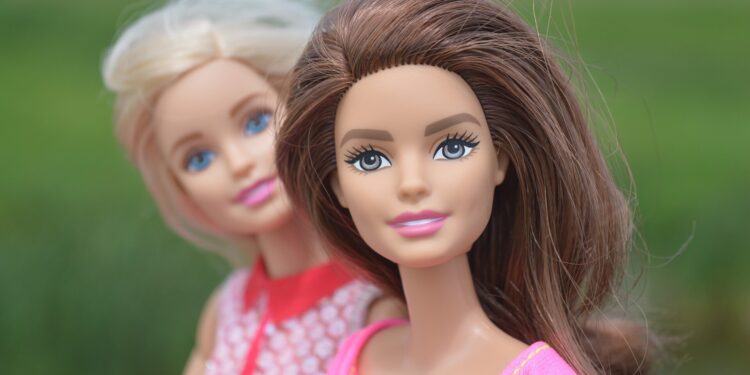Credit: Pixabay/CC0 Public domain
Barbie should consider expanding her medical and scientific career into fields where women and other underrepresented groups remain in the minority, suggests a study published in the Christmas issue of The BMJ.
The ever-popular fashion doll has been a construction worker, teacher and veterinarian, judge, scientist and doctor, symbolizing the careers children can one day aspire to.
But no previous studies have analyzed healthcare professional and scientist Barbie dolls to determine the types of professions they do and their professional accuracy.
To fill this knowledge gap, researcher Katherine Klamer set out to identify the types of medical and scientific fields that Barbie dolls worked in compared to other professional dolls and to determine whether they met clinical safety and quality standards. laboratory.
Its findings are based on analysis of 92 Barbie-brand career dolls (53 doctors, 10 scientists, two science teachers, 15 nurses, 11 dentists and a paramedic) and a comparison group of 65 career dolls. a brand other than Barbie (26 doctors, 27 scientists, seven nurses, two dentists, two engineers and an MRI technician) from July to November 2023.
Doll careers were identified by visually analyzing clothing, accessories, and packaging, and their personal safety accessories were evaluated according to Indiana University guidelines.
Barbie brand career dolls were predominantly depicted as adult (98%), female (93%), and white (59%), and no dolls were depicted as having a visible disability. Of the comparison dolls, 32% were white and one doll had a prosthetic arm.
Barbie brand professional dolls largely treated children (66%), with only three dolls (4%) working with adult patients.
With the exception of three eye doctor dolls, all of the Barbie brand doctor dolls appeared to have no specialty or were pediatricians with no apparent subspecialty.
Barbie brand dolls often came with items such as lab coats, microscopes, stethoscopes, and glasses. However, neither doll fully met professional safety standards in their respective fields. For example, 98% of Barbie brand doctor dolls came with stethoscopes, but only 4% had masks and none had disposable gloves.
More than two-thirds of Barbie-brand professional medical and science dolls also wore loose hair and more than half wore high-heeled shoes, even in settings where this would be discouraged or actively prohibited for safety reasons.
Of the 12 Barbie brand science dolls, none met all personal protective equipment requirements for hair and clothing.
While the comparison dolls offered a wider range of ages and ethnic groups than the Barbie doll group, the dolls also struggled to represent a wide range of medical and scientific subfields and most comparison dolls were not wearing appropriate personal protective equipment.
The author acknowledges that no extensive statistical analysis was used and that while every effort was made to include as many medical professional and laboratory scientist dolls as possible, some dolls may have been neglected.
Nonetheless, she says themed dolls help inspire tomorrow’s healthcare workers and scientists and she urges all toy companies to create better, more accurate and professionally crafted healthcare worker and scientist dolls. diversified.
“For the sake of young girls as much as her own, Barbie must continue to break glass ceilings,” she concludes.
“As surgeons in fields that are decidedly male-dominated, we support Klamer’s conclusion that Barbies should represent a more diverse field of medical and scientific professions and that safety comes before fashion,” say Sareh Parangi and her colleagues. colleagues in a related editorial.
They note that female medical students are still disproportionately discouraged from pursuing surgical careers, even at prestigious institutions, and say that perhaps a childhood spent playing with neurosurgeon Barbie or trauma surgeon Barbie could inoculate girls against sexist career assumptions and advice.
“We encourage and welcome the creation of a Surgeon Barbie, and would be happy to advise Mattel on appropriate accompanying equipment and PPE to ensure the doll is realistic and fun,” they add.
“With an expanded range, Barbies may inspire young girls’ opinions about surgeons and scientists, rather than allowing these careers to be aspirational,” they conclude. “What better way than to have Barbie be first like she has in the past?”
More information:
Analysis of Barbie dolls medical and scientific career: descriptive quantitative study, The BMJ (2023). DOI: 10.1136/bmj-2023-077276
Provided by the British Medical Journal
Quote: Barbie should expand her range of medical and scientific professions, study suggests (December 18, 2023) retrieved December 19, 2023 from
This document is subject to copyright. Apart from fair use for private study or research purposes, no part may be reproduced without written permission. The content is provided for information only.



